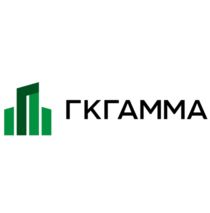intellectual property
The Madrid System for the International Registration of Trademarks currently allows you to register your trademark in 124 countries by filing a single application with the International Bureau of WIPO, paying a single fee. Trademark protection under the international system is perpetual, subject to payment of renewal fees every 10 years.
The Madrid system is the most economical and expeditious way of protecting a trademark in the territory of several states without having to consult the National Offices of the countries where the business interests of the right holder are located.
The application to WIPO IB is submitted through Rospatent (FIPS) with advance payment of the registration and mailing fees. After the check the documents are sent to the International Bureau which makes registration of the mark in the International Register, notification of the countries where protection is sought, examination of the application at each national office, and publication of the information in the bulletins of the corresponding countries and in the WIPO database. The applicant receives an electronic registration certificate.
Entities and entrepreneurs, (and in some countries (not in Russia) also citizens of the states which are parties to the Madrid Agreement (55) and/or the Madrid Protocol (52) have the right to make an application. Russia is a party to both treaties. The most popular countries of the Madrid system for Russian entrepreneurs are the United States, China, EU countries and former CIS countries.
The main advantages are:
The disadvantages of international registration under this system are:
Trademark registration provides the entrepreneur with protection of this object in Russia and abroad. At the moment, international protection is carried out in two main ways - under an international agreement recognized by several countries (under the Madrid system) and in the form of national registration of the object in a particular country.
There is also the registration of EUIPO - European trademark, valid for the EU countries, but the procedure is less popular, since the EU countries are also in the Madrid Agreement; their advantage - do not need a basic national registration or application).
Let's look at the features of each method.
The entrepreneur submits one application to the Federal Institute of Industrial Property, which forwards it to WIPO. The time for consideration of the documents is on average 12-18 months. However, it is possible to extend the deadline in case additional materials have to be submitted. Advantages of this method:
If you plan to do business in only one or several countries, including those that are not party to the Madrid Agreement, you can apply to the patent office of the individual country. You do not have to be registered in Russia for this method, unlike the previous method. A significant advantage is the reduction of the amount of paperwork when registering the subject matter in only one country.
The main disadvantage - if you want to register in several countries, will have to submit several applications, paying for each state fee. In addition, the application must be filed in the national language of the country in which it is filed, with the help of a local patent attorney, which significantly increases the costs. Each office has its own peculiarities, which must also be taken into account when filing.
The national registration procedure in each country is slightly different and will be appropriate if registration in one or more countries is needed, there is no need/ability to obtain a basic registration, the countries of interest are not included in the list of those participating in the Madrid system.
After the international registration, the registered designation is dependent on the basic registration for 5 years. This means that if the basic mark is terminated, the international registration is also terminated. This can happen in the case of litigation in the case, by decision of the patent office of the country or at the voluntary will of the owner.
The patent office is required to notify the International Bureau in case of cancellation of the basic trademark. This information is published in the official gazette and is sent in the form of a notification to all countries in which legal protection of the mark was in force.
After the expiry of the five-year period, the international registration of the mark is independent of the national application and registration, and the trademark certificate is valid even in case of cancellation in the applicant's country of registration (country of origin).
The Madrid system allows you to register a trademark in 124 countries with a single application. The list of member states is gradually expanding; the current list is available on the official WIPO website.
Before applying to WIPO you need to file a basic application for a certificate in the country where the legal entity or individual entrepreneur is registered (in Russia the designation is registered in Rospatent).
The international application is made according to the following rules:
A basic application is an application filed for a trademark registration, with the office of the country of origin, which is a party to an international agreement or protocol.
According to the rules of the Madrid system, an international application can be filed only after the filing of a basic application in the country of origin or registration of the trademark. Without a basic application, it is not possible to register a trademark internationally, as it is the basis for all subsequent actions.
The Office of Origin, where the application is registered, interacts with the member states of the Madrid Agreement and Protocol. The World Intellectual Property Organization receives all documents through Rospatent's employees.
The registration of an international trademark is published in the official gazette and a certificate is sent to the applicant.
National patent offices may issue a total or partial refusal. They inform WIPO, which forwards the documents to the applicant.
The basic fee is CHF 653 for a single-color trademark or CHF 903 for a color trademark (at the start of 2021). There is also an additional fee, the amount of which varies from state to state, and an additional fee for the classes of the ICTR.
Consideration of documents in FIPS is paid separately in the amount of 4900 rubles, and for each class of the ICTR over three additional 400 rubles will be required.
After the decision to register a trademark is made, the final fees for registration are paid, the amount of which depends on the states in which protection of the designation is sought.
International legal protection is unlimited in time, provided that the corresponding application is filed with the WIPO IB and the fee is paid every 10 years. Approximately 6 months before the expiry of the protection, the applicant is notified and before the expiry date the fee must be paid and the corresponding renewal application must be submitted in Form MM11.
But it is advisable to start the renewal procedure itself one year in advance, because if it is missed, it can only be reinstated within an additional 6 months with a 50% increase in the fees.
The standards of the Madrid system permit the following changes:
In order to make the above changes, the owner of the mark must send the corresponding application to the International Bureau and pay the fee. The Madrid system is a convenient way to legally protect intellectual property. The registration procedure is much simpler than in each individual state. Individual entrepreneurs and legal entities through their representatives through Rospatent interact with the international bureau.
The registration procedure itself is quite complicated, so it is best to seek the assistance of patent attorneys at Pervoistok in this matter in order to reduce the possibility of prior denial of registration.












Popular Services
Popular Services
Patent Bureau